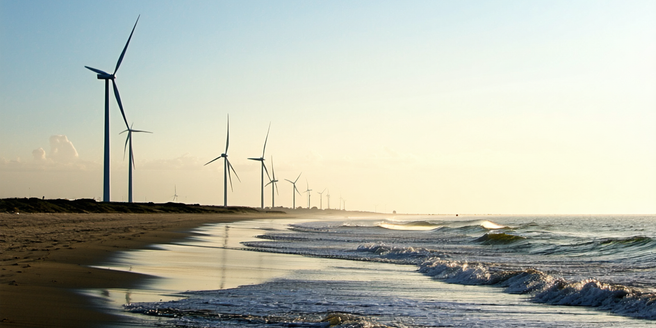
Overview of Wind Energy in Coastal Regions
Coastal areas present significant opportunities for harnessing wind energy due to consistent and strong wind patterns. These regions benefit from unobstructed wind paths over the ocean, leading to higher wind speeds and increased energy capture potential. Installing wind turbines offshore or near the coast can significantly contribute to renewable energy targets. Coastal wind farms are becoming increasingly feasible due to advancements in turbine technology and supportive governmental policies. The strategic placement of wind turbines in these areas provides a sustainable solution to energy needs and helps reduce reliance on fossil fuels, thus aiding in the fight against climate change. Public interest in renewable energy sources adds momentum to the expansion of wind energy projects, ensuring that coastal regions play a crucial role in the global renewable energy landscape.
Key Factors Influencing Wind Energy Potential
Several key factors impact the potential for wind energy generation in coastal regions. Wind speed and consistency are primary considerations, as higher and more reliable winds lead to greater energy output. The geography and topography of the area, including ocean depth and distance from shore, affect installation feasibility and cost. Access to grid infrastructure and proximity to energy demand centers also play significant roles in determining site viability. Environmental regulations and policies, which dictate permitted development and operational guidelines, must be navigated carefully to ensure successful project implementation. Moreover, technological advancements in turbine design and materials continue to improve efficiency and lower costs, making coastal wind projects more accessible and attractive to investors. These elements collectively define the potential and economic viability of wind energy projects along coastlines.
Technological Advancements in Wind Turbines
Technological advancements have significantly bolstered the efficiency and feasibility of wind turbines in coastal regions. Modern turbine designs feature enhanced blade materials and optimized aerodynamics, enabling them to capture more energy from wind at various speeds. Innovations such as direct-drive technology reduce mechanical complexity and improve reliability, while smart sensors and data analytics enhance operational efficiency through real-time monitoring. The development of floating wind platforms expands deployment possibilities to deeper waters, unlocking vast areas for energy production. These advances are crucial in reducing costs and increasing the economic attractiveness of wind energy projects. Moreover, ongoing research in energy storage solutions ensures consistent power supply despite variable wind conditions. As technology continues to evolve, coastal wind energy projects will become increasingly efficient, contributing substantially to global renewable energy goals.
Environmental and Economic Impacts
The expansion of wind energy in coastal areas offers numerous environmental and economic benefits. Environmentally, wind energy is a clean, renewable resource that reduces greenhouse gas emissions, helping to combat climate change. It also reduces the reliance on fossil fuels, thereby lowering air and water pollution. Economically, the development of coastal wind farms generates jobs in manufacturing, installation, maintenance, and operation, boosting local economies. It also stimulates investment in infrastructure and related services. However, it’s essential to balance these benefits with potential environmental impacts, such as effects on marine ecosystems and bird populations. Comprehensive assessments and planning are required to mitigate any adverse effects. Ensuring sustainable development practices will maximize the positive impacts of wind energy while preserving the natural environment.
Future Trends and Opportunities in Coastal Wind Energy
The future of coastal wind energy looks promising, with several trends and opportunities on the horizon. As the global demand for renewable energy increases, investment in offshore wind projects is expected to rise. Advances in technology and reductions in costs are likely to accelerate this growth. Floating wind turbines, which allow for deployment in deeper waters, will open new areas for development, increasing the global wind energy capacity. The integration of energy storage solutions will address variability issues and enhance energy reliability. Collaborations between government bodies, private companies, and research institutions will drive innovation and policy-making, ensuring a sustainable growth path. As awareness and demand for clean energy sources grow, coastal wind energy is poised to play a pivotal role in the transition to a sustainable energy future.
